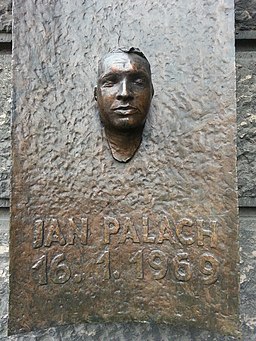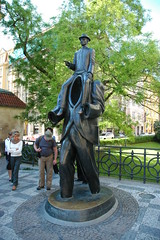I have just come back from the wonderful exhibition Ice Age art: arrival of the modern mind
which is currently on at the British Museum. This once-in-a-lifetime exhibition brings together some of the finest paleolithic works of art, including some superb pieces from the Czech Republic.
I already written a post about the first ceramic representation of the human figure - the Dolni Vestonice Venus. But the sculpture that attracted my son's attention was the first example of a puppet in the world. The Czechs love puppets and clearly this love goes back to the very beginnings of human habitation in their country. This marionette or stick puppet was discovered in the grave of a man in Brno in 1891 and it is thought to have belonged to a shaman.
The British Museum captions states:
The time and skill required to shape and articulate potentially movable limbs on an ivory figure make this a remarkable piece of craftsmanship.
Its spectral appearance and the shadows it could perhaps have made on the walls of a tent if suspended in firelight add a sense of theatre to the way it might have been seen 26,000 years ago.
One of the most remarkable theatrical experiences I have ever had was a production of Gilamesh by an Italian shadow puppet company called Gioca Vita. By moving the puppets between the light source and the screen the puppets grew and diminished on the screen. The impact was extraordinary even when I knew what was happening, it is hard to imagine the impact this puppet would have had on its original audience.
It doesn't surprise me that puppets date back so far. The animation of inanimate objects is something that is innate to human nature. It is something the Czechs understand very well. So if ever you find yourself watching a puppet performance in Prague, don't be surprised by how skilled the performers are, the people of this country have been practising for 26,000 years.
The exhibition is on until the 26th May.





